Four Portions of a Stronger Rowing Stroke
The Four Portions of a Stronger Rowing Stroke
When performed properly, rowing can be one of the most effective total body workouts and conditioning modalities. However, there are technical aspects of the stroke that must be accounted for in order to reap all of the benefits that the machine can offer while also maximizing your performance on the erg. Through Darkhorse Rowing and Concept 2, I became a certified Rowing instructor to learn more ways to teach athletes the positions of the stroke necessary to maximize efficiency and to target the correct musculature.
THE CATCH
The “Catch” is the position that makes or breaks the stroke. The posture and position you’re in here will dictate the amount of power you can generate during the next portion, the Drive. Athletes are typically quick to exit this position because of the tightness associated with coiling up your body to create a spring with the greatest amount of potential energy. You should feel tension through your hamstrings, Achilles, and lower back. A head to toe checklist for this position is:Heels as close to the foot plate as possibleShins as vertical as possibleHips behind shouldersShoulders relaxed and forwardArms long and elbows extendedHold the outside edge of the handle in your fingertipsHead is neutral with eyes on the monitor
THE DRIVE
The Drive is the product of force, acceleration, and distance. Assuming you’ve checked the boxes in the Catch, it is time to uncoil this tension and create some power. Darkhorse Rowing has coined the phrase “Push, don’t pull”. Some may assume that since the stroke appears to be a pulling motion that your arms and back are responsible for generating power. This is incorrect. Imagine pushing the machine away from you. This is where steps 1-3 in the Catch checklist are important. If your heels lift and your hips slide under your shoulders then you are no longer connected and able to engage your hamstrings. This will lead to poor sequencing and a weak acceleration phase.
If you refer back to the Catch, remove the rowing machine from the picture and this position should resemble the bottom of a squat. The first portion of the Drive is to press hard through your mid foot. Once your knees extend while maintaining length through your arms, you enter a position that resembles a hip hinge (think Kettlebell swing). Notice how the arms haven’t done any work yet. The power comes from leg drive, hip swing, and lastly, a bending and pulling of the arms (once your hands reach your knees). Nail your catch position, push the machine away from you, and don’t use your arms until the end of the stroke.
THE RELEASE
When you’ve reached this point, you’ve done all of the “work”. The remainder of the stroke is intended to get you back to the catch as efficiently as possible. The Release is the portion between finishing the pull and returning to a position that is identical to the initiation of the Drive. When you pull the handle towards your rib cage, it does not need to make contact. By striking your sternum, you are decelerating momentum and requiring the use of more energy to get your hands moving again. When the handle moves towards your rib cage at the conclusion of the Drive it immediately pushes away from your body, creating a continuous motion.
THE RECOVERY
As the name implies, the Recovery is the period (albeit brief), to relieve tension and prepare for the next stroke. If you execute the Release correctly, your hands should already be moving back towards the catch. Once the arms are extended to the position in the picture above, the torso hinges forward to an 11 o’clock position followed by the legs coiling into the Catch. If you don’t initiate the Release in this sequential manner, your knees will block the path of the handle and you will be unlikely to find the proper Catch position. Since the legs are the primary mover in the Drive, don’t tax them during the Recovery by rushing to the front of the machine.
Still unsure how this all ties together? We have several drills to encourage these positions. As with any exercise, movement proficiency requires repetition. Understanding of technique encourages better strokes; and better strokes leads to greater efficiency and performance.




